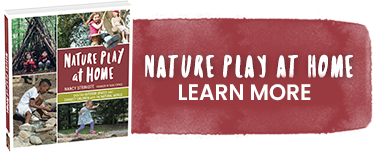The most successful schools I’ve worked with have taken a multi-pronged approach to fundraising. This means seeking out individual donors for large and small gifts within their school and wider community, writing grant proposals, and holding events.
Events could include auctions, fairs and festivals, yard sales (for the schoolYARD— items donated by families and the wider community), plant sales, home and garden tours. Think creatively– there are all sort of events you could hold. A quick overview of a home and garden tour: you can charge developers/architects/builders to have their newly built or newly renovated homes on the tour, and also charge visitors for tickets. Gardens often belong to homeowners who want to share their prized spaces or ecological aspects of their landscape with others. The organizers create a program with descriptions of each site on the tour. The program is an opportunity to sell adds to local realtors, home related service providers, etc. Then you need to do a lot of publicity to get people to buy tickets.
Auctions can include donated items and services from families and local businesses. Things like vacations house rentals, dinners, gift baskets and things made by each class of children at your school (a painted chair with everyone’s handprint; a mosaic with tiles made by kids, a weaving, a calendar of photos). You can even “sell” items from your playspace design– which really means naming rights to those items through signage in the space or right on the actual item once installed in the playspace.
Auctions can be online, or in person events with food and drink.
One school I worked with had connections to lots of immigrant music groups, so they had a Festival for the Wetlands where all the groups performed on the schoolyard in their native costumes. Families made and sold food and there were tours of the schoolyard. This raised thousands to build a Wetlands Learning Lab.
You can arrange with a local restaurant or market to donate a % of their profits from one day, and then encourage all your friends and families to shop or eat there that day. Make it a party!
For individual donors a good way to engage them is to invite them to the design charette. (This is a participatory design workshop that I present early in the process of working with my school clients.) The charette creates a sense of ownership and buy-in.
If there are potential big donors, you might want to meet right at the beginning of the design process and share materials I’ve provided like my portfolio and an overview of the process from my proposal to get them on board and supporting your vision early.
When your Master Plan is complete, it is a very helpful fundraising tool. It will be a color rendered, scale drawing of your playspace showing all the elements. There will also be thumbnail photos of (similar) elements and captions describing each element in the space. This plan is a good way to communicate your vision to the school and wider community, and the photos are good for getting individual sponsors for pieces of the space. You can offer items from the design (a bench, a board in the walkway, a tree or shrub, or a big element like the slide or a swing) that people can “buy” and get their or their child’s name, or a favorite teacher’s name on a plaque in the playspace. Some schools use their existing website shopping cart or create one. The elements available for sponsorship and naming can be communicated via a big bulletin board display, or a booklet. Families –parents, grandparents– might buy these items, and sometimes local businesses are interested. In one recent project, a local realtor sponsored the stage and got her name on a plaque.
For grantwriting, the master plan and written narrative are both useful to include in proposals because they go a long way towards explaining what you’re doing and why.
Here are some resources for grants. You may have your own local foundation/business connections, and also might find possibilities when you do your research. http://baybackpack.com/funding/
It’s worth checking where parents work because employers often donate at employee request.
I promise that you’ll be dazzled by the generosity that’s out in the world. I am, every time. The importance of connecting children to nature is something that’s easy to understand and support.
[/et_pb_text][/et_pb_column][/et_pb_row][/et_pb_section]


